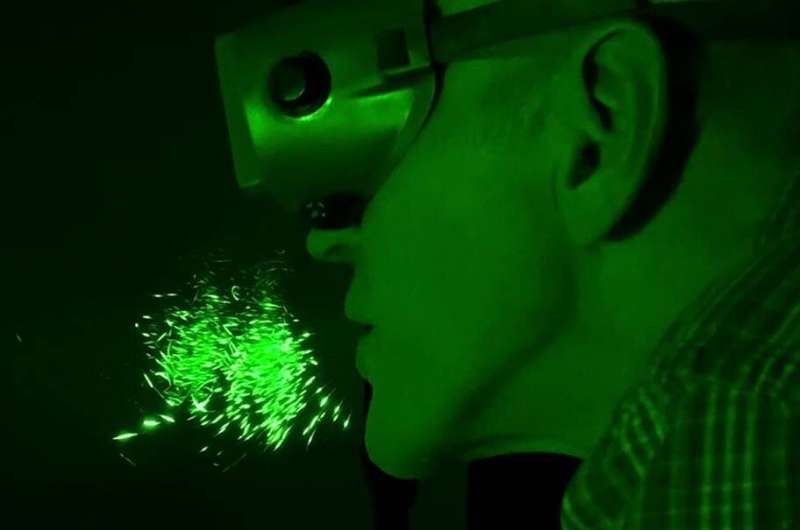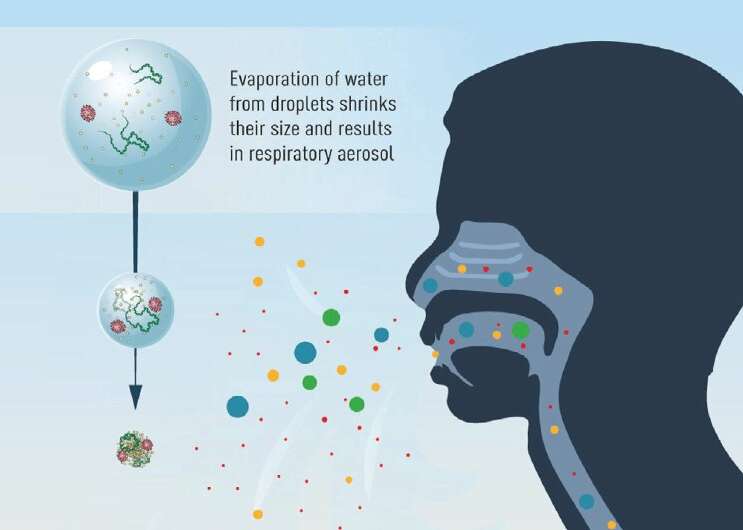Speech droplets drive transmission of SARS-CoV-2

A new review published in the Journal of Internal Medicine indicates that unmasked speech in confined spaces poses the greatest risk of spreading SARS-CoV-2, the virus that causes COVID-19, to others.
The focus of the review is on the interface between physics and medicine, and it describes how different sized respiratory droplets emitted while speaking span a continuum of sizes and can carry different amounts of virus. Most concerning are intermediate-sized droplets that remain suspended in air for minutes and can be transported over considerable distances by convective air currents.
"We've all seen some spit droplets flying when people talk but there are thousands more, too small to be seen by the naked eye. When the water evaporates from such speech-generated, potentially virus-rich droplets, they float in the air for minutes, like smoke, thus putting others at risk," said senior author Adriaan Bax, Ph.D., of the National Institute of Diabetes and Digestive and Kidney Diseases.

More information: Journal of Internal Medicine (2021). DOI: 10.1111/joim.13326




















